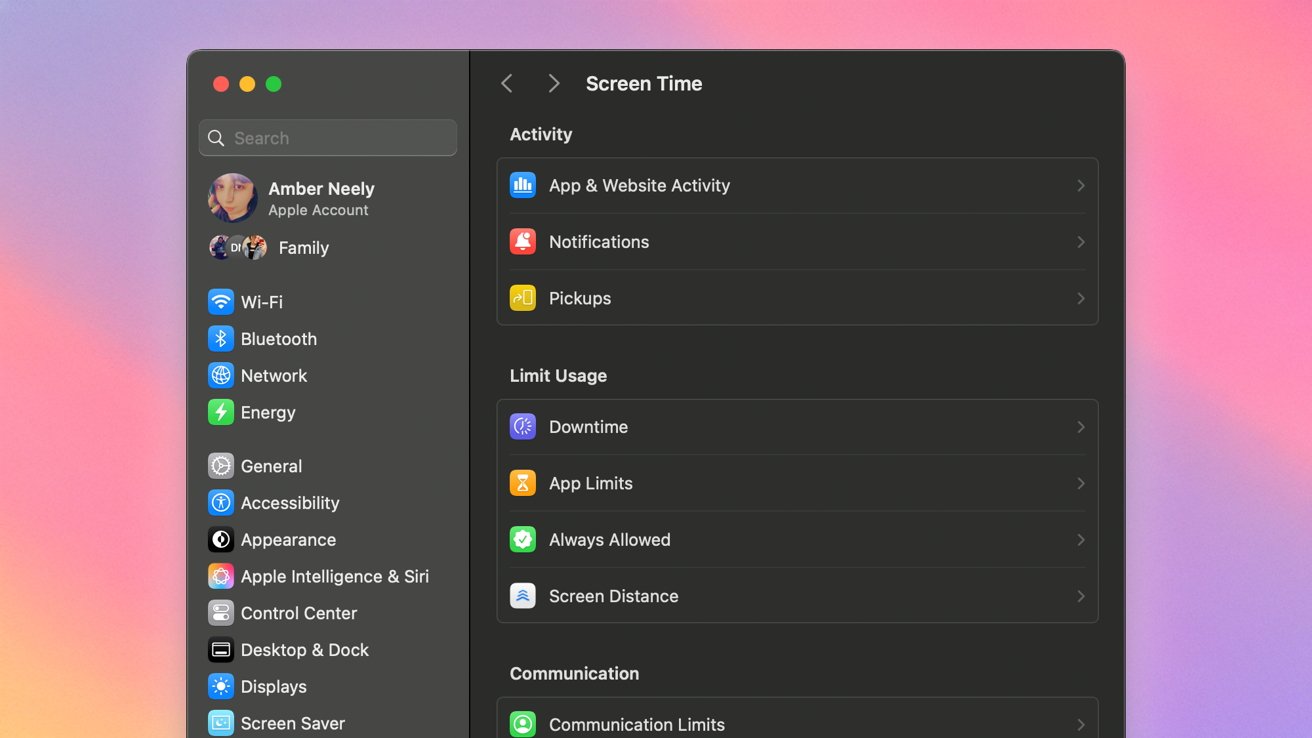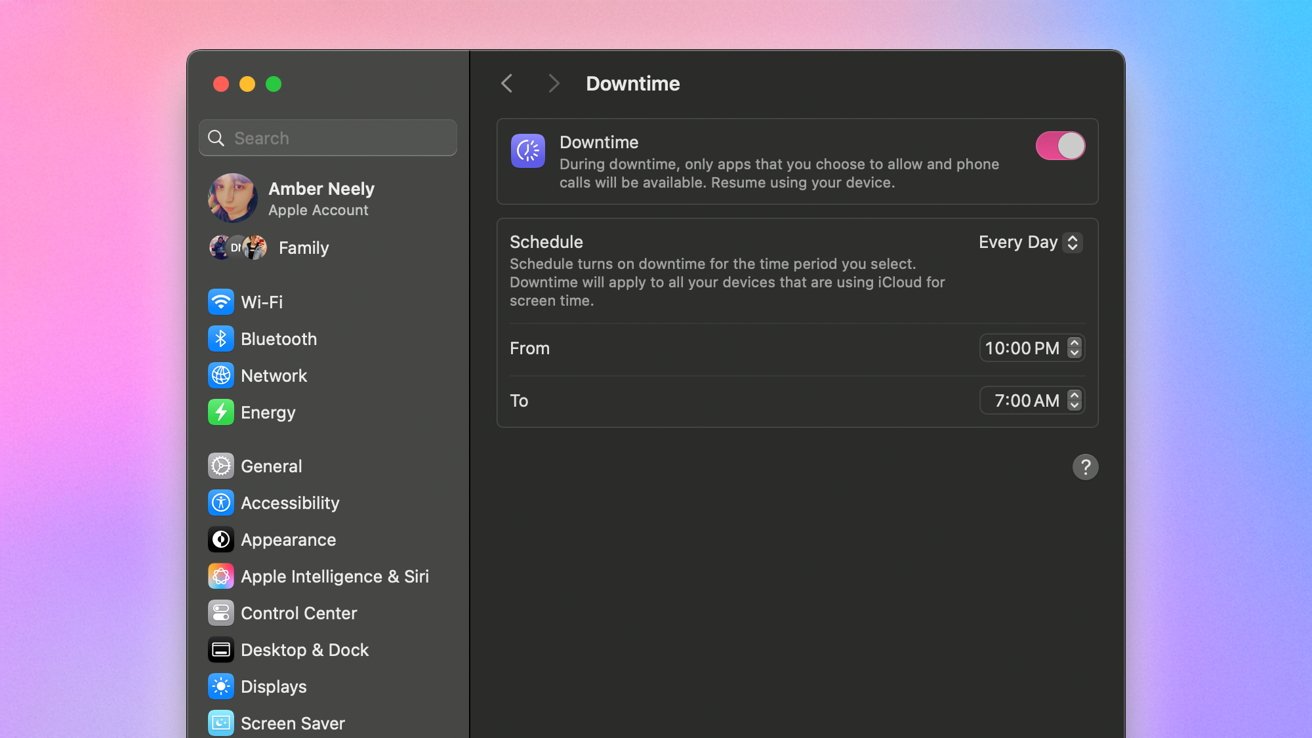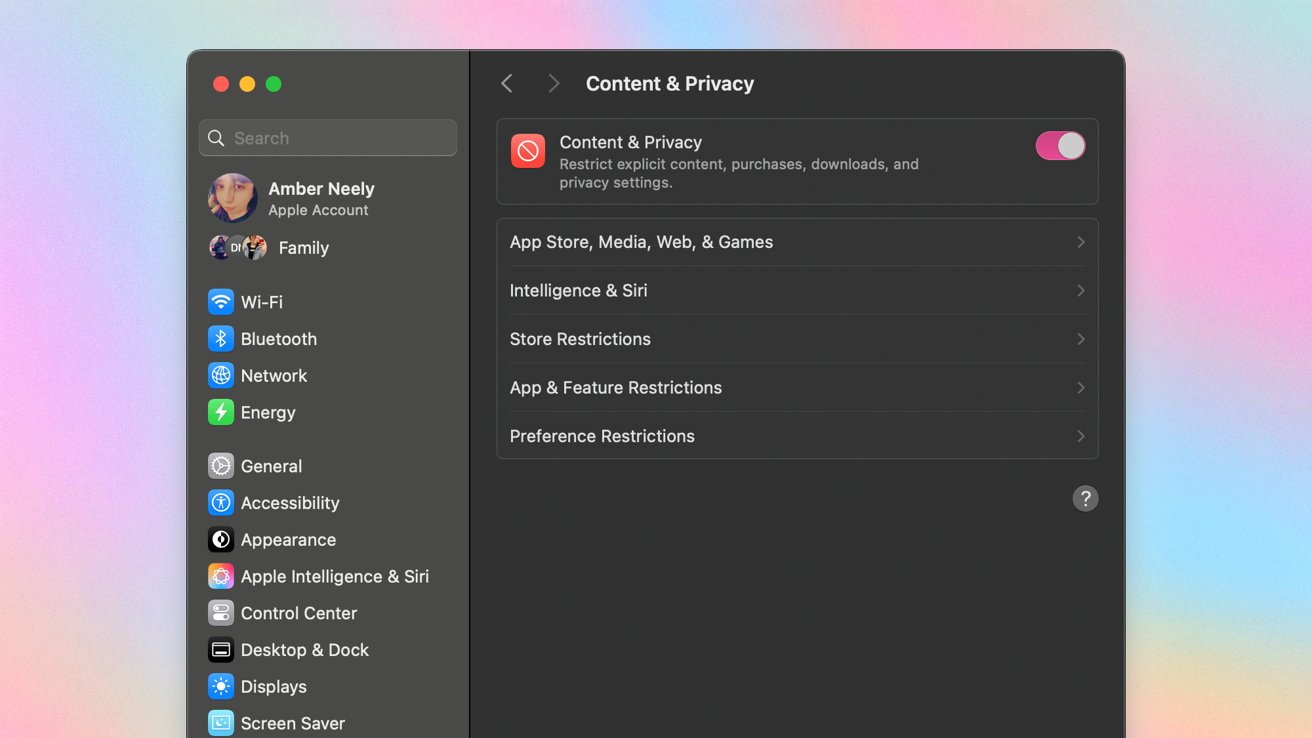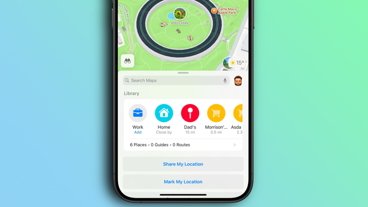Keeping your kids safe online might seem scary, but it's simple with Mac. Learn how to set up parental controls for your child's Mac in macOS Sequoia.
Raising kids today can be tough, especially when you realize you need to protect them just as much online as you do in the real world. After all, you want to ensure your child is familiar with technology that they'll be expected to use for school, for future jobs, and to participate in society.
However, it's hardly a secret that the internet is often unkind and unsafe, especially for children.
From cyberbullying and explicit content to online predators and privacy breaches, there's a lot for a parent to worry about. This becomes even more apparent when children are given devices of their own and have access to them outside the supervision of a guardian.
The importance of safeguarding children online extends beyond immediate concerns. Exposure to harmful content or interactions can have lasting emotional and psychological effects. Compromised personal information could lead to identity theft, which can create a whole host of problems down the line.
This is why parents and guardians must understand the potential threats and take proactive steps to ensure their safety.
Like iPhone and iPad, macOS has built-in parental controls to help keep kids safe online. We'll show you how to find them and what each does.
It's worth noting that there aren't as many parental controls on macOS as on iOS or iPadOS. However, there are still important safety-geared options that should be utilized if you've got a child with their own Mac.
Before getting started, make sure the Mac in question is updated to the latest version of macOS.
How to set Screen Time limits on macOS Sequoia
For many parents, monitoring how much time their child has in front of a screen can feel daunting. Fortunately, Apple has a simple solution for that — Screen Time limits. To set limits, you'll need to enable the feature by following the steps below.
- Click the Apple Menu
- Click System Settings
- In the sidebar, click Screen Time
- Toggle on Screen Time
Once enabled, you've got several options for setting limits, all under the Limit Usage section in the Screen Time section. Here's what each section covers:
- Downtime: Allows you to set a schedule for time away from screens for your child
- App Limits: Allows you to set time limits for specific apps or app categories, such as social media or gaming apps
- Always Allowed: These apps are always allowed, regardless of other time limits. You cannot disable Phone, though you can set restrictions on who can be contacted
- Screen Distance: While this section is displayed here, it is only usable on devices with Face ID. Toggling this on will set the limit for an eligible iPhone or iPad connected to the account and will not affect macOS
How to set Content & Privacy restrictions on macOS Sequoia
You can go a step further and set what kinds of content children can access in the Content & Privacy restrictions. To enable this feature, you'll need to:
- Click the Apple Menu
- Click System Settings
- In the sidebar, click Screen Time
- Click Content & Privacy
From here, you're able to change a number of settings. Here's what you can find in each category.
App Store, Media, Web, & Games
This section is where you'll find basic controls that enable what kind of interactions your kids can have in Game Center. You can toggle on or off the ability to add friends, private messaging, and multiplayer.
There are also two options for Music & TV: allowing music profiles and allowing music and TV shared libraries.
It's also where you can filter out explicit content across the web.
Intelligence & Siri
Apple's officially entered the AI race, which means you're seeing more Apple Intelligence features being rolled out with each update. Because machine-learning content is still in its infancy, it's understandable why you might not want to give a child unrestricted access to anything it spits out.
This section is where you go to set what kinds of Apple Intelligence are okay for your kid to see, and what kinds aren't. It's also where you go to enable or disable specific Siri features, such as explicit language permissions or web content in Siri.
Store Restrictions
This section differs quite a bit from its iOS counterpart. It is where you'll set the age restrictions for movies, TV shows, and apps. You can also disable explicit music, podcasts, books, and news here, too.
The remaining options focus on iOS permissions. From here you can toggle an account's ability to install, delete, or make in-app purchases, though it'd be better to set up these restrictions on the iPad or iPhone in question.
Apps & Feature Restrictions
In this section, you can disable three macOS-specific features, including Store, and SharePlay.
The rest of the options in this section are geared toward the iOS device associated with the account in question. Again, these are better handled on iOS rather than via macOS.
Preference Restrictions
All of the categories in Preference Restrictions affect iOS only and will not affect macOS. It includes allowing passcode and account changes, cellular data changes, TV provider changes, and a few others.
Talk to your child
Protecting children online isn't just about monitoring their activities — it's about empowering them with the tools and knowledge they need to make safe, informed choices.
All the tools in the world won't help if you don't engage in some honest — and realistically uncomfortable — conversations with your children. While it might be a difficult topic to broach, teaching kids how to look out for their well-being is critical, and you'll be glad you did it.
If you're unsure where to start, we'd suggest checking out CommonSense.org. This safety-geared website offers a great jumping-off point for teachers, parents, and kids, all helpfully sorted by age group.
For younger children, CommonSense.org focuses on teaching kids the basics of internet safety. Elementary-aged kids can expect to learn lessons about how to safely use the internet. This includes teaching them which information is safe to share online, the importance of strong passwords, and how to behave both responsibly and kindly in online spaces.
For middle schoolers, the lessons begin to broach topics like identifying predators, learning to avoid scams, clickbait, and malware, and the risks of sexting.
High schoolers can expect topics that cover things that will keep them safe well into adulthood. This is where teens will learn how the sausage is made, so to speak.
These lessons cover understanding tracking and data brokerage, the risks of social media use, and even ask teens to consider whether or not the government should have carte-blanch access to their personal data.
We suggest contacting your child's school to see if and what digital safety lessons students can access. If there are none, you may want to consider partnering with other parents to formally request them.
And, of course, you should make an earnest attempt to keep the lines of communication open. It's important not to make a child feel afraid to come to you with any problems they're having online — it's much better to catch a problem early than have it fester.
Many of us who grew up using the internet in the early- and mid-2000s have personal experience with online predators or know someone who has. And these numbers are only getting higher as children are exposed to online gaming and social media.
That's why it's critical if you suspect your child is in a dangerous situation, make it clear that the situation isn't their fault. Instead, make it known that the child can speak freely and without fear of punishment.
Lastly, be sure to set good examples for your kids. Take time to do activities together away from screens. Encourage kids to connect with their peers and foster hobbies that are age-appropriate and cater to their interests.
 Amber Neely
Amber Neely











-m.jpg)






 Marko Zivkovic
Marko Zivkovic
 Malcolm Owen
Malcolm Owen


 William Gallagher
William Gallagher

 Sponsored Content
Sponsored Content



-m.jpg)






2 Comments
My current issue with screentime is that Chrome et al completely ignore its content and site restrictions. One of our kids attends an online charter school whose software is largely non-functional in Safari, so I’m forced to ‘allow’ the app on our ‘family’ Mac, but because of the way Chrome circumvents Screentime, our content and site blocking/limiting there is completely worthless.
if I block YouTube (and its associated dot com address) for that Mac at router level, it is mostly successful, but eventually it causes issues block some portion of that school’s authentication (which is google based).
You’re likely going to need to use Qustodio if you are serious about child cyber protection.
i-devices suffer from another issue which allows untimed and unrecorded access to selected apps via Assistive Access.